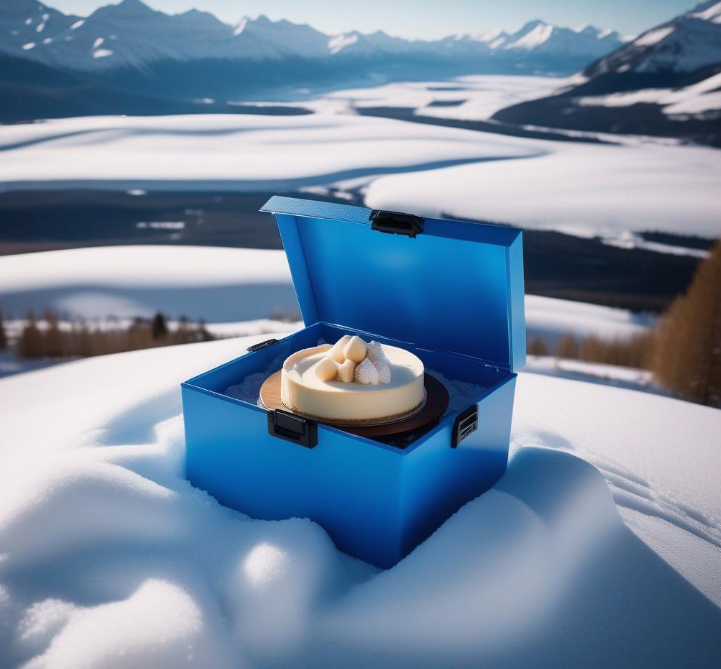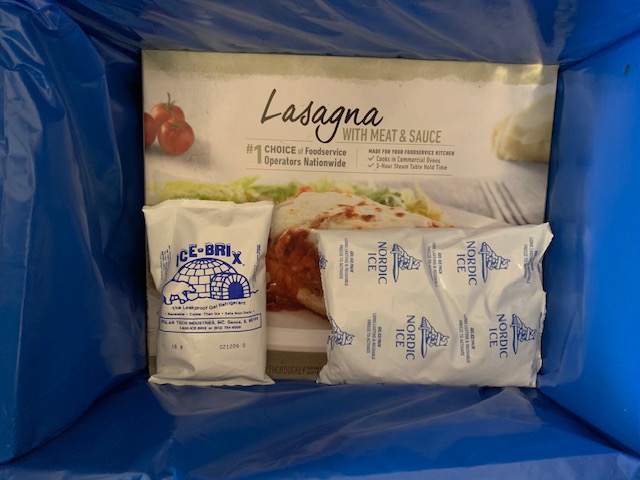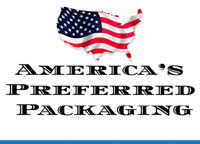Cold chain packaging has direct impact on food quality, security, and longevity. We will help you ensure your products maintain the right temperature while maintaining their quality and integrity from production floor to store shelf.
Contact Us for a Free Quote
![]()
In the food manufacturing industry, some of the top cold temperature packaging options include insulated containers, temperature-controlled packaging materials, and gel packs or dry ice for maintaining optimal temperatures during transportation. Preferred Packaging offers each of these options.

Cold Temperature Packaging: Components and Requirements
Maintaining the integrity of temperature-sensitive food products during transportation is crucial to ensure they reach their destination in pristine condition. Therefore, it’s essential to choose the right cold chain packaging to meet your specific needs and maintain optimal temperatures for your products.
Components of Cold Temp Packaging
The four fundamental components of cold temperature packaging include insulation, coolant, outer packaging, and box liner. The insulation material used must have a high R-value to ensure effective temperature maintenance. Most commonly, polystyrene foam or expanded polyurethane foam is employed due to their excellent insulation properties.
The addition of either gel packs, dry ice or wet ice – depending on the level of cooling required – constitutes the coolant component. Keep in mind that as temperature requirements increase, so does the need for dry ice or wet ice to guarantee more extended periods of cold retention. However, it’s vital to consider sunscreen protection since too much direct exposure can lead to ‘thermal burn’ during handling.
Outer packaging – such as corrugated cardboard boxes – serve to contain all other elements firmly and provide an adequate barrier against external temperature changes.
Finally, selecting an appropriate box liner depends largely on what you are shipping. For instance, perishables like meat or fish would require leak-proof plastic bags compared to Styrofoam liners used when transporting baked goods.
Additionally, selecting between reusable and single-use temp-controlled containers should factor into your choice of box liner materials, especially if you’re planning recurring shipments.
Suppose you’re a Seattle-based coffee roaster seeking to ship coffee beans in peak condition across the US. In that case, you might decide to opt for custom-designed boxes lined with styrofoam. You may then proceed to use polyethylene bags filled with ice packs before sealing them and placing them in your insulated box.
Understanding the components of cold temp packaging is essential, but understanding cold chain requirements constitutes another crucial aspect.
In addition to Styrofoam, there are environmental solutions as pictured below. Control Temp Blue pad sets, biodegradable and has a high R value and flexible packaging.

Understanding Cold Chain Requirements
The use of cold temperature packaging is vital for any food manufacturer, as it helps maintain the quality and integrity of their products by keeping them at the correct temperature throughout the supply chain. For perishable goods like meat, dairy, and seafood, maintaining the proper temperature during shipping is critical to avoid spoilage or contamination, which can result in significant financial losses for companies. In this section, we’ll explore what cold chain requirements are and how different packaging solutions meet them.
Insulated Container Solutions
A cold chain refers to a temperature-controlled supply chain that extends from production to consumption. It involves transporting temperature-sensitive goods under prescribed conditions, including appropriate storage and transportation temperatures. These temperatures typically range from -40°C to +8°C (-40°F to +46°F). Maintaining the correct temperature along the entire supply chain is vital to preserve product quality and safety.
Ideally, a cold chain solution should monitor both the internal and external temperature of the cargo continually. The monitoring process should be simple and straightforward so that staff can quickly detect any deviations in temperature. If the temperature drops below or rises above the recommended range, alarms need to be activated, which alerts personnel responsible for taking action.
Let’s say a food company wants to ship frozen salmon fillets from Alaska to New York with an estimated transit time of 3-5 days. The ideal cold chain process requires a well-insulated container that protects against heat loss and maintains temperatures between -23°C (-9°F )and -18°C (0°F) throughout transit.
- Maintaining a cold chain is crucial for preserving the quality and safety of temperature-sensitive goods during transportation. This involves monitoring both internal and external temperatures and promptly taking action if there are any deviations from the recommended range. Insulated containers are essential for maintaining the desired temperatures throughout transit.
Freezeable and Liquid Ice Solutions
Insulated containers play a crucial role in adhering to cold chain requirements by providing thermal protection for products during transport. They protect products from harmful environmental factors such as sunlight or rain that could affect their lifespan.
Polystyrene foam (commonly known as Styrofoam) is a popular material used in manufacturing insulated containers because of its unique insulating properties. It can form a barrier against heat transfer, which helps maintain the desired temperature range and prevent spoilage for perishable goods like seafood and meat.
Other materials used for insulation include polyurethane foam, reflective films, and vacuum insulated panels (VIP). Polyurethane foam is known for its excellent thermal insulation properties and is often used in conjunction with other materials such as VIP to provide additional insulation. Reflective films are commonly used to reflect solar radiation while VIP offers excellent insulation capabilities.
For maximum protection, some insulated containers come with bumpers or padding to protect against impacts during handling or transport. Some also come equipped with digital temperature monitoring devices, which notify the staff when temperatures deviate from the set point.
Environmental and Regulatory Factors in Cold Chain Packaging
Effective temperature control is critical for ensuring the integrity of food products during transit. Freezeable and liquid ice solutions are two packaging options that cater to this need.
Freezeable gel packs are economical and readily available in the market, while their liquid counterparts offer a better volume-to-weight ratio. Both options have pros and cons, making it essential to weigh factors such as product size, distance to travel, and anticipated transit time before deciding on which to use.
Liquid ice solutions provide better coverage for contents and can be easily molded around the package, giving more contact area and enabling a more effective heat exchange between the container walls and its contents. However, it is vital to handle these packages with care when transporting goods over long distances or if there’s a risk of disruption during shipment.
Additionally, environmental considerations come into play when using liquid ice solutions. They often require specific handling protocols and disposal methods that may not align with sustainable business practices. As such, a careful balance must be struck between maintaining product integrity during transport and minimizing environmental impact.
For instance, Company A may opt for freezeable gel packs since they’re pursuing ISO 14001 certification as part of their company’s commitment to sustainability. Alternatively, Company B may choose liquid ice solutions as they transport seafood products that spoil quickly with minimal moisture penetration.
In essence, while both options provide temperature control solutions for various needs, utilizing them effectively necessitates strategic evaluation of requirements alongside other factors.

Maintaining Product Quality in Cold Temp Packaging
Our temperature sensitive specialty packaging for food will get the job done. From specialty gift items to branded food products, our temp control food packaging solutions will maintain product quality and keep your food safe.
Contact Us for a Free Quote
![]()
